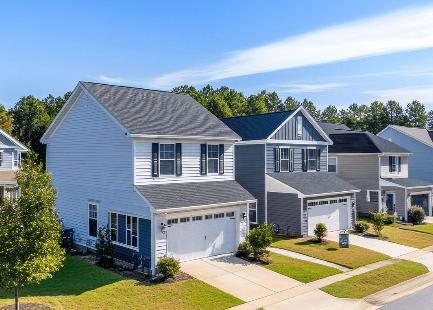In today’s evolving real estate landscape, successful investors leverage strategic financing to extract maximum value, whether they’re building multi‑unit complexes in New York or converting suburban sites in Texas and Florida. The right development loans can transform raw potential into profitable projects efficiently and predictably. This blog explores how construction and development loans, tailored to both commercial development loans and residential development loans, unlock value across diverse market types.
1. Urban Ambitions: Big Builds in New York and California
A. Commercial High-Rises and Mixed-Use Towers
In cities like New York and Los Angeles, land is scarce and expensive. Developers target mixed-use structures—commercial below, residential above—to maximize ROI. To secure land in these high-stakes zones, they often rely on land development loans backed by firm exit strategies.
- Scenario: A developer acquires an infill lot in Manhattan with an approved plan for a 20-story tower. They secure commercial development loanstied to vertical permitting milestones.
- Financing strategy: Interest-only draws support construction until lease-up. Upon stabilization, the loan is refinanced into a permanent mortgage with lower rates.
- Outcome: Immediate value bolstered by rental and retail income, with long-term hold potential. The project becomes a long-term asset in a high-demand market.
B. Luxury Condo Conversions
In California, developers convert underused commercial properties—old office spaces or empty storefronts—into luxury condos or mixed-use developments. This strategy works well in areas with limited new housing starts but increasing population density.
- Scenario: A downtown Los Angeles building is reimagined into 50 upscale condos. Financing begins with a property development loancovering acquisition and retrofit.
- Financing strategy: Phased funding tied to framing, interior finishes, and certificate of occupancy inspections.
- Outcome: Premium value achieved through strategic upgrades and resale to high-income buyers. Profitability is accelerated due to location desirability and swift unit turnover.

2. Suburban Strength: Value Plays in Texas and Florida
A. Multifamily Communities in Growth Corridors
Cities like Dallas and Tampa are expanding with new families and young professionals. Developers capitalize on this with well-planned multifamily communities that meet both lifestyle trends and housing demand.
- Scenario: A developer purchases five two-acre parcels on Houston’s outskirts to build three duplex clusters. They secure residential development loanscovering both land and construction.
- Financing strategy: Loans are phased—acquisition, foundation, units framed, interiors, and landscaping.
- Outcome: Rental income begins shortly after unit occupancy, and investors either refinance to long-term loans or sell individual units. Cash flow is quick to materialize, supporting broader portfolio growth.
B. Small-Scale Retail & Mixed-Use in Suburban Hubs
Retail demand in growing suburbs is rising. Developers build small mixed-use centers with retail on the ground floor and apartments above, making these hubs walkable and economically vibrant.
- Scenario: A retail strip in Austin transitions into a mixed-use property—three storefronts with six apartments above.
- Financing strategy: Utilize a development loan for commercial propertyto fund both vertical and horizontal improvements.
- Outcome: The property yields diversified income streams through rent from both retail and residential spaces. In addition, the asset appreciates as the neighborhood evolves.

3. Comparing Residential vs. Commercial Development Strategies
| Strategy | Residential Development Loans | Commercial Development Loans |
| Scope | Multifamily, townhomes, duplexes | Retail centers, offices, mixed-use towers |
| Loan Type | Interest-only draws during construction | Draw-based funding with mixed-use focus |
| Exit Strategy | Rent and refinance, or sell units | Long-term lease structure or refinancing into CMBS |
| Risk Profile | Grounded in local housing demand | Dependent on lease-up anchor tenants and foot traffic |
| Typical Markets | Suburban Texas, Florida | Urban NY, CA |
4. Structuring Loans for Maximum ROI
Smart developers tailor development financing to market type and timing:
- Land Stage– Secure land development loans at up to 80% Loan-to-Cost, particularly when plans are pre-approved.
- Construction Stage– Switch to interest-only construction and development loans, matched to build milestones.
- Lease-Up Stage– Begin drawing interest-only payments as units become sellable or rentable.
- Exit Stage– Refinance into long-term low-rate mortgages or sell to capture high equity.
This phased financing ensures capital gets deployed precisely when needed, minimizing interest costs and maximizing yield. Smart loan structuring can make or break a development’s profit margin.
5. Legal and Regulatory Considerations
Development projects must navigate permitting, zoning, environmental assessments, and utility access—issues that vary significantly between urban and suburban contexts.
- Urban builds may face green building mandates, density limitations, and historic preservation laws.
- Suburban projects might require road widening, sewer or utility extensions, and stormwater regulations.
Experienced development loan lenders verify site readiness before funding and structure draw schedules to reflect local timelines. They also help borrowers stay compliant and on schedule.

6. Regional Financing Insights
- New York property development loansoften require phased draws linked to Certificate of Occupancy and tenant commitments.
- California development loan providersbuild in seismic review and wildfire insurance costs.
- Texas development financing benefits from streamlined regulation and low-cost land acquisition.
- Florida real estate development loansaccount for hurricane resilience upgrades and flood-zoning inspections.
Tailoring financing to regional requirements reduces delays and unexpected costs, ensuring smoother development cycles.
7. Long-Term Value Creation Using Development Loans
Strategic developers consider both short- and long-term gains:
- Short term: Use development project loansto boost value through renovations, rezoning, or densification.
- Long term: hold stabilized assets funded by long-term mortgages or sell to capture high equity.
For example, converting a warehouse to lofts in Manhattan can provide immediate uplift and enduring rental income. Similarly, a luxury rental complex in Houston may appreciate significantly as the market evolves, enhanced via multifamily development loans. Value is created at every stage when financing is intentional and aligned with a clear strategy.
8. Choosing the Right Lender Matters
Partnering with the right development loan providers can determine your success.
- Approval speed and draw flexibility mean you act on opportunities when they appear.
- Interest terms directly affect project viability and profitability.
- Local market insight ensures compliance and helps budget for region-specific costs.
- Transparent structuring eliminates surprises and supports long-term project confidence.
In real estate development, a lender isn’t just a funding source—they’re a partner in execution and success.
Your Path from Vision to Value
Unlocking potential in both urban towers and suburban multifamily builds starts with the right development loan strategy. But the true advantage comes from working with a partner who understands how to move fast, structure smart, and deliver financing aligned with your market, whether you’re breaking ground in New York or expanding in Texas.
At Insula Capital Group, we specialize in construction and development loans, residential development loans, and commercial development loans tailored to your blueprint and bottom line. With regional expertise, milestone-based draw schedules, and flexible terms, we help ensure your project not only breaks ground—it scales with confidence, stays on schedule, and drives long-term returns.
Ready to build smarter? Partner with Insula Capital Group and turn your next development project loan into lasting value.




